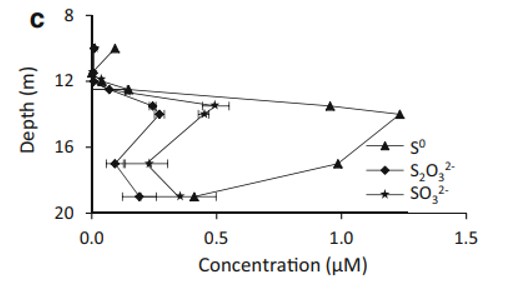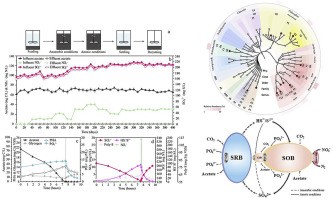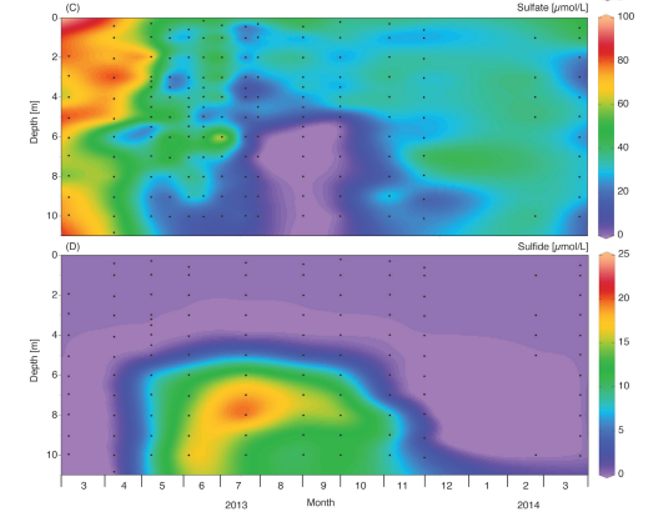
Authors
Chi Zhou, Teng Miao, Lai Jiang, Hang Zhang, Yi Zhang, Xu Zhang
Black bloom occurs frequently in eutrophic waters. We investigated the conditions promoted the formation of black bloom via in-situ measurement in two aquatic microcosms and the effects of black bloom on the bacterial community composition. Although larger changes in dissolved oxygen (DO) were detected in the Hydrilla verticillata-dominated microcosm over the 90-day simulation, black bloom occurred more readily in the phytoplankton-dominated than macrophyte-dominated microcosm under conditions of O2 depletion and temperature above 30 °C. The sediment bacterial community composition shifted after black bloom; the relative abundance of Thiobacillus and Sideroxydans, which oxidize iron (Fe) and sulfur (S), decreased by 47% and 48%, respectively, in the phytoplankton-dominated microcosm and by 18% and 20% in the macrophyte-dominated microcosm. By contrast, Desulfatiglans increased by 13% and 19%, respectively, after black bloom. Furthermore, inter-taxa correlations remarkably changed according to co-occurrence network analysis. Thirty-six different taxa from the phylum to the genus level were identified as biomarkers of sediments collected before and after the black bloom event. Most of these biomarkers are related to Fe/S cycling in aquatic ecosystems.





